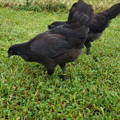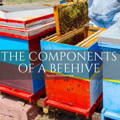Molting FAQ's for the Backyard Chicken Owner
It is a cool fall day. The leaves are falling from the trees. The days are getting shorter. The nights are getting longer. You walk outside to check on the chickens. Look into the coop. You notice the whole coop is full of feathers!! The chickens are going bald and it looks like they have had the pillow fight of the century.
What is really going on in the coop? Well folks don’t panic! This is the start of the annual molting process and is a completely natural occurrence when it comes to our feathered friends.
Subscribe
To join our mailing list and never miss an update!
FUN FACT: Even baby chicks molt. They shed their down feathers from birth as the adult feathers develop and emerge.
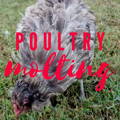
But before we can talk about molting, we need to discuss the important function of feathers for chickens. Feathers are a chicken’s protection from the environment. Think of it as poultry body armor.
Feathers protect the skin from sunburn. They trap in warm air to keep the body warm. They are also your chicken’s raincoat on wet days. They even play a role in a chicken’s protective defense against attack. It is because of their importance that they must be at tip top shape.
FUN FACT: The hexagon shapes that form honeycomb hold the most amount of honey with the smallest amount of beeswax required. Perfect efficiency.
WHAT IS THE POULTRY MOLTING PROCESS?
In short, molting is the biological process by which chickens replace their old feathers with new plumage. As your chicken loses its’ old feathers, new ones will begin to emerge in their place which are called pin feathers.
Pin feathers are protected with a sheath of wax-like protection and contain blood circulation for the development of a mature feather. As the pin feathers grow, the wax-like casing will fall off (or your chickens will pull it off) and a beautiful new feather will begin to unfold from the shaft.
Once the feather has reached its’ full development, the blood vessel inside the shaft will recede back into the follicle on the chicken’s skin and the feather’s quill will be hollow.
Molting usually occurs in late summer/early autumn (unless the molt is triggered by something external such as stress, malnourishment or illness). During the long and hot summer months a chicken’s feathers start to get dull brittle and prone to easy breakage. Mother nature has created a way to shed those brittle feathers and allow the chicken to grow new ones that will provide warmth and protection from the elements.
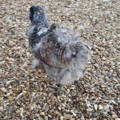
WHAT IS A HARD MOLT?
There are two very general terms that poultry people use when describing the molting process. A regular (or soft) molt vs. a hard molt. Both are purely subjective but if you’re chickens look like they’ve gone a round with the neighbor’s cat, they’re probably experiencing a hard molt.
A hard molt can be described as the chicken losing most of its’ feathers within a short time span. Hard and fast is the rule and chickens can take on a patchy baldness.
Slow and steady is the rule for a soft molt. A soft molt feather loss occurs over a longer period of time and in much less dramatic fashion. In some cases, you may not even realize your chickens are molting except for the visible evidence of feathers in the coop and backyard.
While both types of molting are draining to your chicken’s body systems, a hard molt is much more taxing on the bird because it is so drastic.
WHEN IS THE FIRST MOLT FOR CHICKENS?
Baby chicks will shed their down feathers within a couple weeks after hatch as they are replaced with juvenile feathers. Cockerels will have a second “mini-molt” as the male sickle feathers emerge.
Juvenile pullets and cockerels under 12 months of age will not go through the process of a traditional adult molt their first season. However, most will molt the following autumn.
In my personal experience, my rock star egg layers (the Dixie Rainbows) did not molt hard the first year, but had an extremely hard molt that was late in the season the second year.
Broody hens will usually wait until they finish raising their young until they go into molt. It is normal for broody hens to look a little disheveled during this wonderful time.
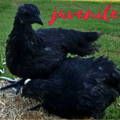
HOW LONG DOES THE POULTRY MOLTING PROCESS TAKE?
The entire molting process will take anywhere from 3 weeks to as much as 20 weeks, depending on the bird and the number of feathers it has to replace. Very hardy layers are usually the fastest to complete their molting process.
You may notice that your feathered friends are more irritable and lethargic. This is because they are uncomfortable and their bodies are being extremely taxed for feather production.
WILL MY HENS LAY EGGS WHILE MOLTING?
Most hens will either stop laying eggs all together or slow down significantly while they are molting. Feathers are comprised of 85-90% protein. The function of egg production ceases because the body’s resources are being demanded by the task of producing an entirely new set of feathers.
Trending Products
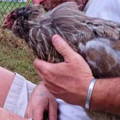
HOW DO I CARE FOR MOLTING CHICKENS?
Molting chickens can be greatly assisted with an increase of protein to their diet during the feather rejuvenation cycle. Protein, Protein and did I say Protein? Remember, the feathers of chickens are made up of over 85% protein.
We change feed in late summer to one with a 22% protein content to make sure our poultry have all the protein that their bodies require during the molting process. Cat food is another good option during this time. Make sure that you supply them with plenty of water. Apple cider vinegar is a good add in to help with digestion. A liquid vitamin supplement added to their water will help immensely. Keep an eye on them to make sure that your chickens are eating and drinking well and everything should be fine.
I have one particular hen that barely moves when she is going through a hard molt. I have even pulled her out of the flock, for fear of her own safety, and given her a quiet space with food and water to let her get through the process without the stress of being in the middle of the flock and competing in the pecking order.
Because the pin feathers contain blood vessels to grow the developing feathers, it can be painful for your bird to be handled. Try to avoid picking them up during this time.
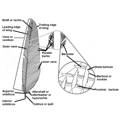
THINGS TO REMEMBER
- Molting is a natural and (usually) annual process.
- Molting can be stressful for your birds. Don’t introduce additional stressors during the molting process.
- Make sure that your birds are well fed and watered during the molting process and have plenty of protein.
- Be very careful when handling your chickens during a molt. It’s best to avoid if possible. Feathers are prone to easy breakage and sensitive. Your bird doesn’t want to be picked up while they’re molting because it hurts. Be very gentle with them.
- Keep an eye on your flock for any molting members that might need a little extra TLC during this exhaustive process.
- If your chickens are molting outside of the normal molting season, you need to identify the reason. It may be illness, malnourishment caused by being blocked from the feeder, or something in the environment that is causing stress in your poultry.
- Do not introduce new chickens into the flock during the molting process if possible. The new member(s) create additional stress to your chickens. If you notice that one of your molting birds is being picked on, separate that bird from the flock until the molting process is complete.
- Keep styptic powder available in your poultry medicine cabinet to stop bleeding of any pin feather breakage.
Copyright©2019 All rights reserved. We love to have you share our article as long as you include a direct link to this page. Please contact us for permission and we’ll be happy to collaborate. This article or any portion thereof , including all images, may not be reproduced or used in any manner whatsoever without the express written permission of Gypsy Shoals Farm.

